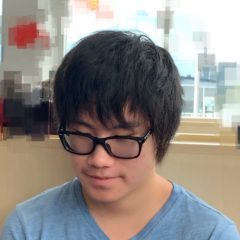Yesterday, my class had a workshop where a scientist came into the school in order to teach us about something. We already had one earlier on in the school year about different types of cells, but this time the workshop was about different types of machines and how they can make life easier.
The workshop started in the morning and lasted up until around 12:10 so we had time to go through a few things. First, we were reminded about the list of simple machines such as pulleys, levers, wedges, etc. Then, we learned more about a few types of simple machines through various hypothetical situations, and which versions or types of those simple machines would be the best to use. We also got to use actual items to experiment with.
Our first simple machine was the lever. We started with the various components of the lever which are the fulcrum, load, and effort. Starting with a first-class lever with the fulcrum in the middle, and the load and effort on opposite sides; we calculated the AMA or Actual Mechanical Advantage by dividing the load force by the amount of effort it took to move it. Then, we did the same with a second-class lever and third-class lever, and then discussed which type of lever would be the best to use if we wanted to move a bunch of tables around. It seemed like most people thought that the most practical one to use was the first-class lever because it was the easiest to set up and had the greatest AMA.
Next, we looked at two wedges of different sizes, both were isosceles triangles, but one had a shorter base than the other. We calculated the IMA, or Ideal Mechanical Advantage by dividing the side length by the base. It turned out that the wedge with a smaller base had a greater IMA. However, our hypothetical was that we wanted to prop open a window in order to cool down the room. You’d then have to decide whether or not you’d use the wedge that’s easier to put in or the wedge that creates a larger opening for air to go through. I ended up choosing the larger wedge because even if it takes more effort to use, it’d end up cooling the room down faster.
After that, we used inclined planes and how they provide mechanical advantage. We first calculated the work of using both an inclined plane to reach the top of a surface compared to going straight up, and also the AMA of the inclined plane. It turns out that using an inclined plane requires more work or time but less effort in the process. Then our hypothetical was that we wanted to go up a cliff to reach a food truck at the top, and we either had to choice of climbing straight up or using a slope. I’m not sure if some people were joking or not, but a few people actually said that they would rather climb straight up rather than use an inclined plane. To me, even if it takes a bit more time I’d rather use less effort to get up.
Lastly, we used four different types of pulleys and how each of them have different AMA’s and IMA’s, but also have different efficiencies. It’s kind of difficult to explain, but some of the pulleys also have different positions on where you pull, so they can only be used in certain situations. We started with a fixed pulley, then a movable, then a single block and tackle, and then a double block and tackle. Each one had a higher AMA than the one before it, but also had a decrease in efficiency. Our hypothetical was that we wanted to lift up a sign to a certain height, and I went with the double block and tackle because although there is low efficiency it was still the pulley system with the greatest mechanical advantage.
The final task we did was attempting to construct a contraption that utilizes at least three simple machines in order to ring a bell, but not a lot of people actually finished because we didn’t have a lot of time. Overall, I had some fun, and it was a lot better than doing the normal school work we usually have.
